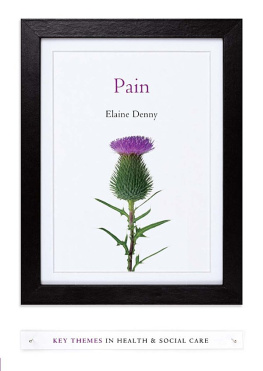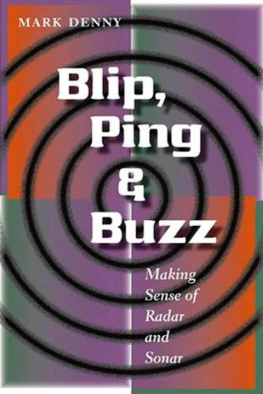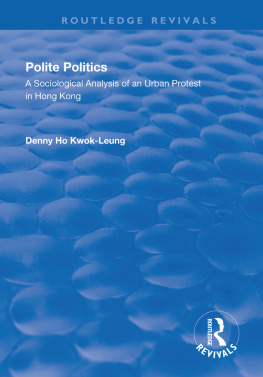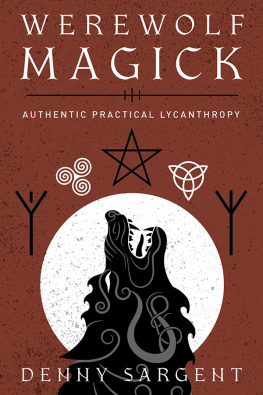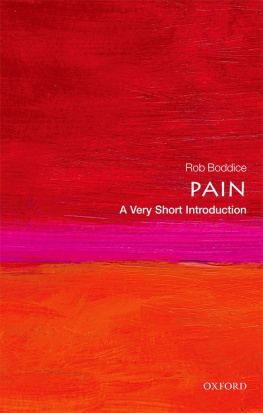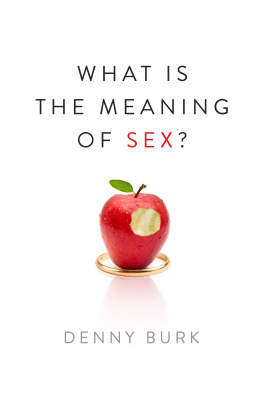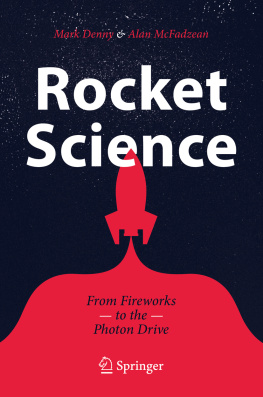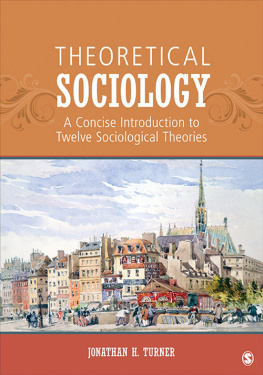Denny - Pain: a sociological introduction
Here you can read online Denny - Pain: a sociological introduction full text of the book (entire story) in english for free. Download pdf and epub, get meaning, cover and reviews about this ebook. City: Cambridge;England, year: 2018;2017, publisher: Polity, genre: Politics. Description of the work, (preface) as well as reviews are available. Best literature library LitArk.com created for fans of good reading and offers a wide selection of genres:
Romance novel
Science fiction
Adventure
Detective
Science
History
Home and family
Prose
Art
Politics
Computer
Non-fiction
Religion
Business
Children
Humor
Choose a favorite category and find really read worthwhile books. Enjoy immersion in the world of imagination, feel the emotions of the characters or learn something new for yourself, make an fascinating discovery.
Pain: a sociological introduction: summary, description and annotation
We offer to read an annotation, description, summary or preface (depends on what the author of the book "Pain: a sociological introduction" wrote himself). If you haven't found the necessary information about the book — write in the comments, we will try to find it.
Denny: author's other books
Who wrote Pain: a sociological introduction? Find out the surname, the name of the author of the book and a list of all author's works by series.
Pain: a sociological introduction — read online for free the complete book (whole text) full work
Below is the text of the book, divided by pages. System saving the place of the last page read, allows you to conveniently read the book "Pain: a sociological introduction" online for free, without having to search again every time where you left off. Put a bookmark, and you can go to the page where you finished reading at any time.
Font size:
Interval:
Bookmark:
Key Themes in Health and Social Care series
Alan Cribb and Sharon Gewirtz, Professionalism Nick Fox, The Body
Janet Hargreaves and Louise Page, Reflective Practice
ELAINE DENNY
polity
Copyright Elaine Denny 2018
The right of Elaine Denny to be identified as Author of this Work has been asserted in accordance with the UK Copyright, Designs and Patents Act 1988.
First published in 2018 by Polity Press
Polity Press
65 Bridge Street
Cambridge CB2 1UR, UK
Polity Press
101 Station Landing
Suite 300
Medford, MA 02155
USA
All rights reserved. Except for the quotation of short passages for the purpose of criticism and review, no part of this publication may be reproduced, stored in a retrieval system or transmitted, in any form or by any means, electronic, mechanical, photocopying, recording or otherwise, without the prior permission of the publisher.
ISBN-13: 978-1-5095-2722-9
A catalogue record for this book is available from the British Library.
Library of Congress Cataloging-in-Publication Data
Names: Denny, Elaine, author.
Title: Pain : a sociological introduction / Elaine Denny.
Description: Medford, MA : Polity Press, [2017] | Includes bibliographical references and index.
Identifiers: LCCN 2017021111 (print) | LCCN 2017022759 (ebook) | ISBN 9781509527212 (Mobi) | ISBN 9781509527229 (Epub) | ISBN 9780745655543 (hardback) | ISBN 9780745655550 (pbk.)
Subjects: LCSH: Pain. | Pain--Social aspects.
Classification: LCC BF515 (ebook) | LCC BF515 .D466 2017 (print) | DDC 306.4/61--dc23
LC record available at https://lccn.loc.gov/2017021111
The publisher has used its best endeavours to ensure that the URLs for external websites referred to in this book are correct and active at the time of going to press. However, the publisher has no responsibility for the websites and can make no guarantee that a site will remain live or that the content is or will remain appropriate.
Every effort has been made to trace all copyright holders, but if any have been inadvertently overlooked the publisher will be pleased to include any necessary credits in any subsequent reprint or edition.
For further information on Polity, visit our website: www.politybooks.com
Pain in one form or another is probably the most common symptom presented to healthcare professionals and has long been a subject of biomedical and psychological interest. More recently, biopsychosocial theories of pain have also emerged. The work of Melzack and Wall (1965, 1968) in describing and refining gate-control theory has been very influential in extending the study of pain beyond a measurable concept to one which is highly individual in the way it is experienced. However, this work has been set within a naturalistic framework, and only much more recently has a sociological analysis of pain been attempted. While students in the natural and social science disciplines have access to discrete bodies of knowledge, students in the health professions, and indeed people searching for explanations for their own pain, tend to make use of an eclectic mix of theoretical and practical work. This can, however, lead to confusion over seemingly disputed territory and conflicting arguments and conclusions. Making sense of the competing arguments may be a difficult task for people not versed in appraising different forms of evidence. With that in mind, this volume seeks to be accessible without being simplistic.
To that end, I will begin by clarifying how certain terms will be used in the book. Clinicians or health professionals are used as generic terms for physiotherapists, nurses, doctors, etc., working in clinical practice. The phrases long-term condition or illness or chronic disease or illness reflect how the terminology has changed as ideas about those living with these states of health have changed. I tend to employ the terms used in the studies I cite, but in other places adopt the common distinction between disease and illness: the former understood as a medically diagnosed condition, the latter as the experience of living with health problems. However, it must be acknowledged that there is no clear boundary between normal and pathological, and it is this that frequently results in tensions in health and healthcare.
You will also come across concepts that are problematised in some parts of the book but used uncritically in others, such as that of diagnosis. Similarly, in some places it may seem that binary oppositions such as that between acute and chronic pain are not being challenged as false divisions. These concepts and distinctions are so universal and hegemonic that the English language does not always offer alternative terms that would allow us to recognise the contested nature of the dominant discourse that surrounds them. Where relevant, I have highlighted the contested nature of these concepts, but elsewhere, in order to avoid repetition, I have left them unchallenged.
Finally, the word experience is used frequently throughout the book, and its meaning may appear to be somewhat taken for granted. Unless interpreted differently in relation to the studies cited, I adopt the definition given by Kleinman and Seeman, who argue that experience is not a deep and individual subjectivity, but rather represents the intersubjective, felt flow of events, bodily processes, and life trajectory which always takes place within a social context (2000: 234). Here the link between the personal, the cultural and the social is acknowledged: experience does not take place in a vacuum, but is mediated by cultural and social structures, which will be utilised to explore individual narratives.
Much of the medical research on pain has been conducted using quantitative methods, and although this provides information on large numbers of people, it tends to lack context. Sociological research in the area has mainly utilised qualitative approaches. This does not produce results that can be generalised to the wider population, but it does give us insight and understanding in relation to the world of those living with pain, the meaning it has in their life, and how they make sense of it. It can also seem that the results of such research are usually negative, but, as C. S. Lewis states, Pain hurts. Thats what the word means (1940: 105). It may be that those who are in the most extreme forms of pain, or those whose pain is not managed well, are more likely to take part in research that gives them a voice.
If you suffer from pain, particularly long-term pain, you may find that parts of this book, or the individual stories it presents, resonate with your own experience, or help you to understand or make sense of your life. Unfortunately, though, you will not find a new treatment to try, or anything that will ease your pain. The book is an exploration and examination of various facets of pain from a sociological perspective. There are many authors and researchers on pain whom I have not cited, and one criticism of the study may be that I have neglected a classic text or respected authority. My focus here is on an exploration of pain that attempts to be illuminative, rather than exhaustive, in its use of the literature.
My own interest in exploring pain began in the late 1980s when I was researching womens experience of in vitro fertilisation (IVF). I interviewed a woman and her husband who had at great expense, both financial and personal gone through three cycles of IVF, all of which had been unsuccessful. It was then discovered that the woman suffered from endometriosis, which meant that the IVF could never have worked for her. Her husband told me that his wife had always experienced very painful menstruation, which they had repeatedly informed health professionals about, and which should have led to a faster diagnosis and treatment prior to IVF. However, his wifes pain was never taken seriously; she was fobbed off and told that the pain was psychological and caused by her inability to conceive. This is a story I have heard many times since, as will become apparent later in the book. At the time I was left wondering how a symptom such as severe pain could be totally ignored and trivialised in the management of a patient, particularly when treatment is proving unsuccessful. It was some years later that I had the opportunity to explore these issues further, when I started research with other women who had been diagnosed with endometriosis. I discovered that the way pain is experienced and managed is highly complex and multi-layered, with assumptions and value judgements made by those experiencing pain, by those treating them, and by their significant others.
Font size:
Interval:
Bookmark:
Similar books «Pain: a sociological introduction»
Look at similar books to Pain: a sociological introduction. We have selected literature similar in name and meaning in the hope of providing readers with more options to find new, interesting, not yet read works.
Discussion, reviews of the book Pain: a sociological introduction and just readers' own opinions. Leave your comments, write what you think about the work, its meaning or the main characters. Specify what exactly you liked and what you didn't like, and why you think so.

